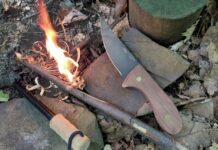
Chuck Taylor is one of the earliest civilian defensive firearms instructors. He worked for Jeff Cooper and ran Gunsite at one point. He served in Vietnam and was an encyclopedia of knowledge. Searching For Chuck Taylor these days mostly comes up with shoes, but Mr. Taylor was a legend. He passed in 2020, and the shooting industry is less for it. Chuck Taylor established something called the Combat Master certifications.
He established these standards in 1982 and used them as a baseline for student skills. The Combat Master certification covers four weapons: the handgun, the submachine gun, the shotgun, and the rifle. If you could pass all four, you were a 4-way Combat Master. According to the archive version of Chuck Taylor’s website, there are only five 4-way Combat Masters.
Today, to memorialize Mr. Taylor and his lasting imprint on the training industry, let’s look at the handgun Combat Master standards. Maybe you can go out at your local range and see if you’re up to snuff with Mr. Taylor’s standards?
The Handgun Combat Master Test
The stages use Mr. Taylor’s own target. It’s a Taylor Combat Target. These are vaguely silhouette targets with distinctive hit zones. They come in black and white, but there are also partially camouflaged variants. Camo targets create an interesting challenge at moderate ranges. They are still available and sold at Action Target.

You can earn a total of 400 points with a passing score of 360 points. The scoring is broken down into major and minor power factors. Any hit on the X is five points. Hits outside the X are 2 for Major and 1 for Minor. Penalties earn -5 points and include:
- Premature Start; “Creeping”.
- Overtime shot. SPECIAL NOTE: If the overtime shot was caused by a malfunction and it was CORRECTLY cleared, no penalty will be assessed.
- Hit on an object designated as cover or hostage. In the case of an “edger,” if more than half of the bullet diameter is on the target, no penalty is to be assessed, and credit for a peripheral hit will be given.
- Overtime Speed or Tactical Reload, Malfunction Clearance.
- Procedural error.
These Combat Master qualifications are found on the archive version of Chuck Taylor’s website. Use the Internet Archive and Wayback Machine to find it. http://chucktayloramericansmallarmsacademy.com/combatmaster.html.
Stage One – Standard Exercises
To be a handgun Combat Master, we’ll need to conduct a fairly long course of fire. If fired from concealed, you can add 2/10ths of a second to each drill.
Part 1 – At 1 meter, draw and fire two shots from close retention in one second. On Mr. Taylor’s website, it’s called the Speed Rock technique.
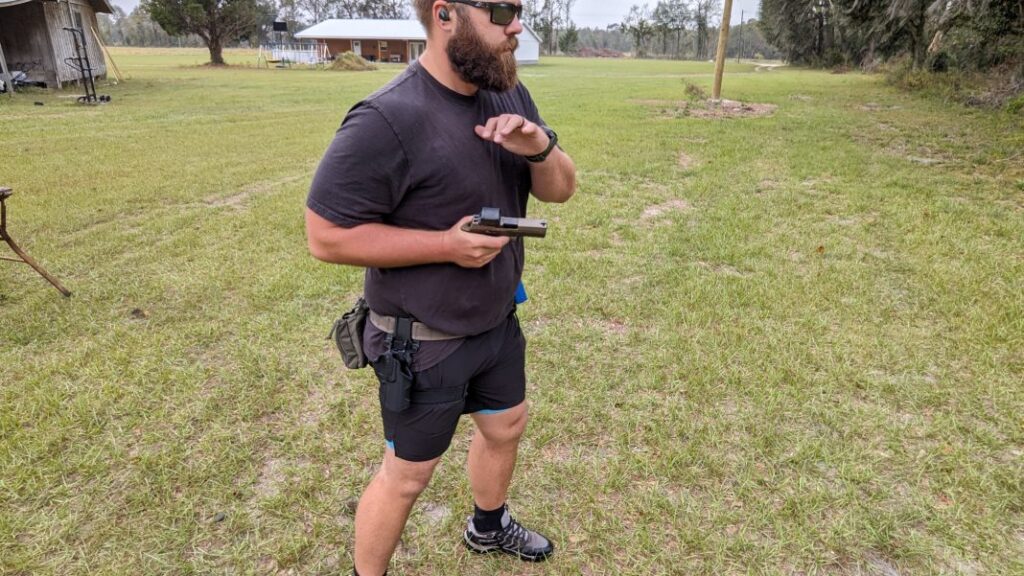
Part 2 – At 1 meter, draw and fire two shots as you step rearward.
Part 3- You’ll fire two shots at various ranges from the holster at various time points. They are as follows:
- From 3 meters, draw and fire two shots in one second.
- From 7 meters, draw and fire two shots in 1.3 seconds.
- From 10 meters, draw and fire two shots in 1.8 seconds.
- From 15 meters, draw and fire two shots in 2.3 seconds.
- From 25 meters, draw and fire two shots in 2.8 seconds.
- From 50 meters, draw and fire two shots in 6 seconds.
Stage Two – Presentation Evaluation
For this stage of the Handgun Combat Master Course, we’ll stick to seven yards. Start with your weapon holstered. You’ll draw and fire one shot at the go signal in seven seconds. You’ll repeat this drill five times.
Stage Three- Responses To Left, Right, and Rear
This portion of the Combat Master test will involve moving. We’ll start at seven yards, and one shot will be fired per repetition. Start with your weapon holstered and your body will face parallel to or in the opposite direction of the range.
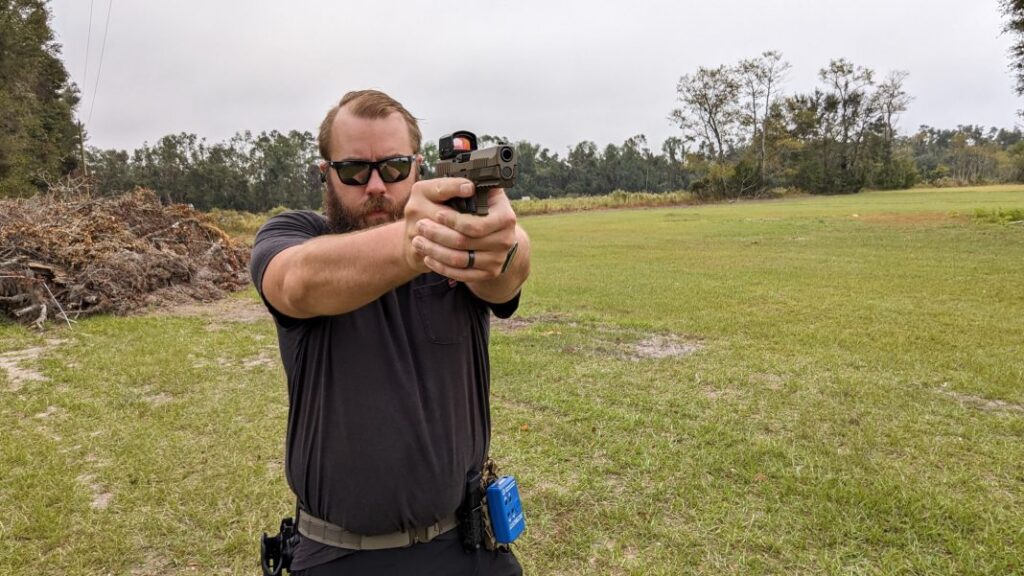
- Respond to the left, draw, and fire one round in 1 second.
- Respond to the right, draw, and fire one round in 1 second.
- Respond to the rear, draw, and fire one round in 1.2 seconds.
Repeat each of these positions five times.
Stage Four – Small Targets
The small targets portion of the Handgun Combat Master will focus on headshots to the target. You’ll start with your weapon holstered.
- At 5 meters, draw and fire one headshot in 1 second. (Repeat four times.)
- At 7 meters, draw and fire one headshot in 1.2 seconds (Repeat five times)
Stage Five – Hostage Situations
You’ll need four total targets. Two will be hostage, and two will be threats. Use the hostage targets to cover 40% or so of the head of the hostage taker. One target should have 40% of the right side of the head covered, and the other should have 40% of the left side of the head covered. You’ll need to cant the hostage targets at 40 degrees as well.
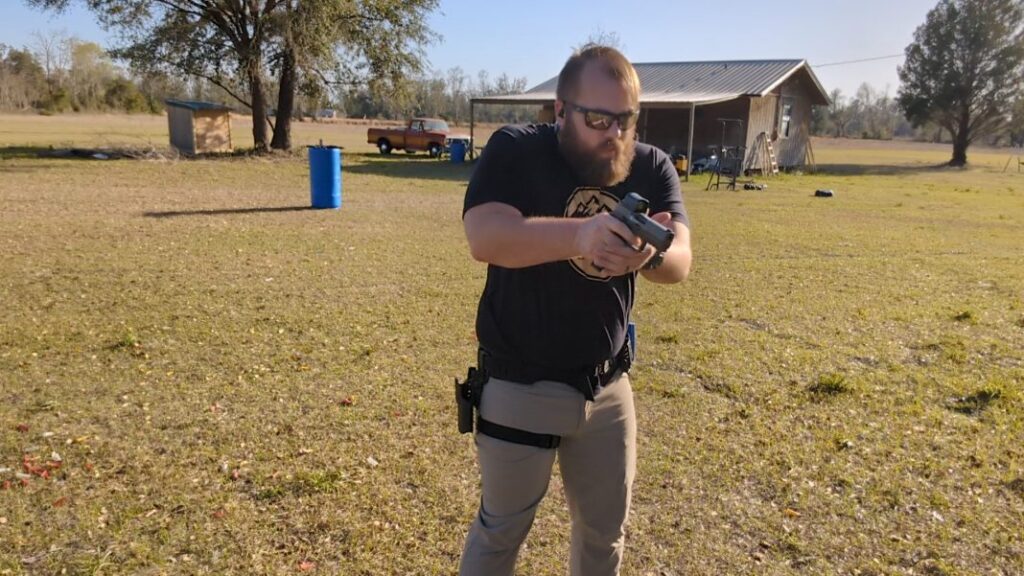
- From 7 meters, draw and fire one shot to the hostage taker’s head on the right (Repeat five times)
- From 7 meters, draw and fire one shot to the hostage taker’s head on the left (Repeat five times)
Stage Six – Multiple Targets
This is not a quick course of fire. You’re likely figuring out that you’ll need to dedicate a lot of time to make this work, but you’ll be a Combat Master! Not really, because you have to do it in front of two Combat Masters to earn that title.
Stage 6 requires four targets placed 1 meter apart. You’ll draw and fire one shot on each target. You’ll engage the strings of fire as follows:
- Two Targets in 1.2 seconds
- Three targets in 1.5 seconds
- Four Targets in 1.8 seconds
Stage Seven – Ambidextrous Shooting
At seven meters, place three targets one meter apart. Load two magazines with three rounds. Load one magazine into the weapon.
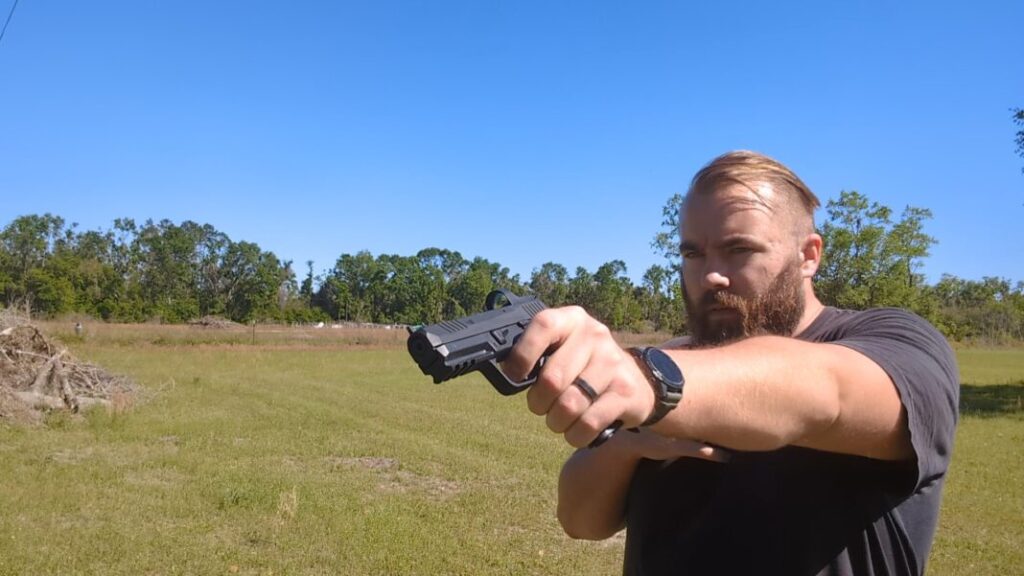
At the beep, draw and fire one round per target. Reload, transition the gun to your weak hand and fire one shot per target. You have six seconds for semi-autos and eight seconds for revolvers.
Stage Eight – Targets At Odd Angles
At seven meters, you’ll setup two targets in a canted position. One should cant left, and one should cant right. The targets should be 40% hidden by ‘cover.’ You’ll need to pick between head and chest shots and, according to the test, stick to one for the entirety of the stage.
- Draw and fire one shot to the right target. (Repeat five times)
- Draw and fire one shot to the left target. (Repeat five times)
Stage Nine – Speed Reloads
There is no shooting here. It’s just reloading. You’ll reload your gun from empty five times. For semi-autos, you have 1.5 seconds. For revolvers, you have four seconds. Repeat the drill five times.

Stage Ten – Tactical Reloads
There is still no shooting. This is reloading with retention. You have four seconds for both semi-autos and revolvers. Repeat the drill five times.
Stage Eleven – Malfunction Clearing
This is the last drill of the handgun Combat Master. There is no shooting. It’s weapon handling only. You’ll defeat three types of malfunctions.
- Fix a type one stoppage, aka failure to fire in 1 second.
- Fix a type two stoppage, aka a failure to eject in 1 second.
- Fix a type three stoppage, aka a feed way stoppage, in four seconds.
Repeat each of these techniques five times.
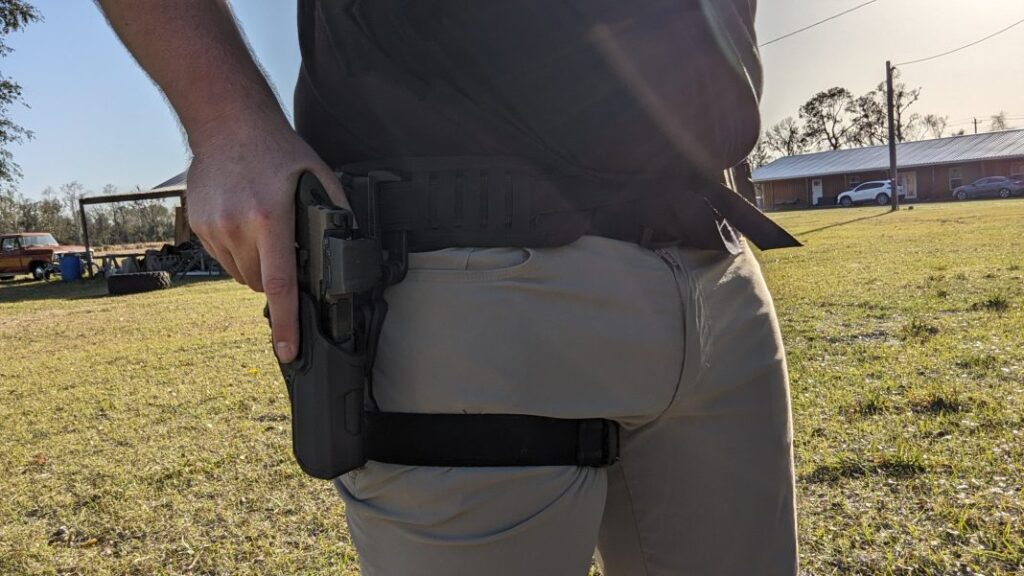
Are You A Combat Master?
Oh boy, that’s a long qualification. It seemed to expand and grow throughout the years. It’s most certainly a challenging course of fire. I’m not a handgun combat master, but are you? At the very least, it’s a very well-made course of fire that will give you some guided training. Who doesn’t need a little more training?



